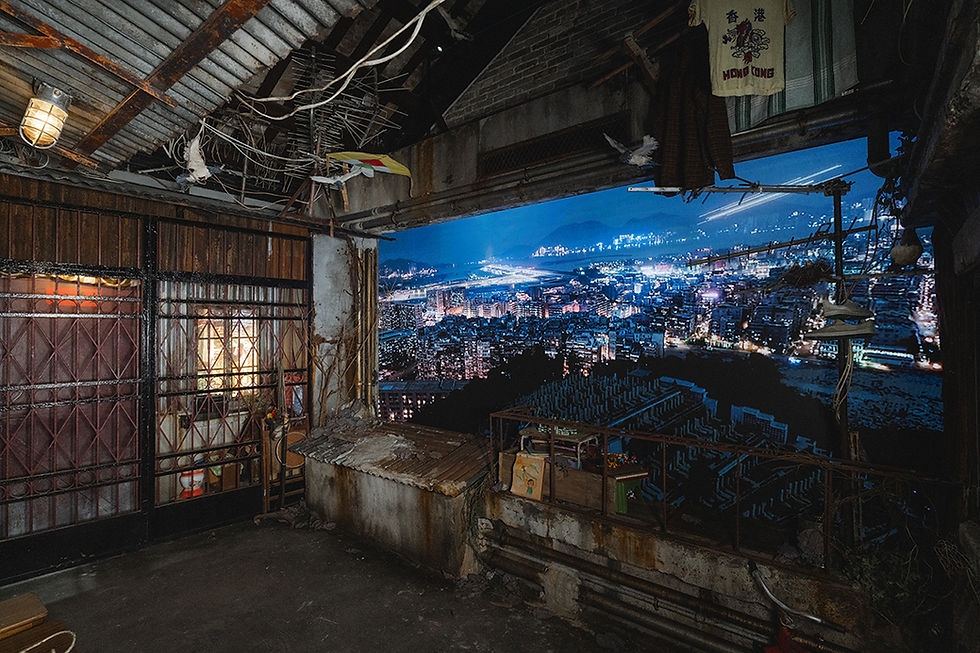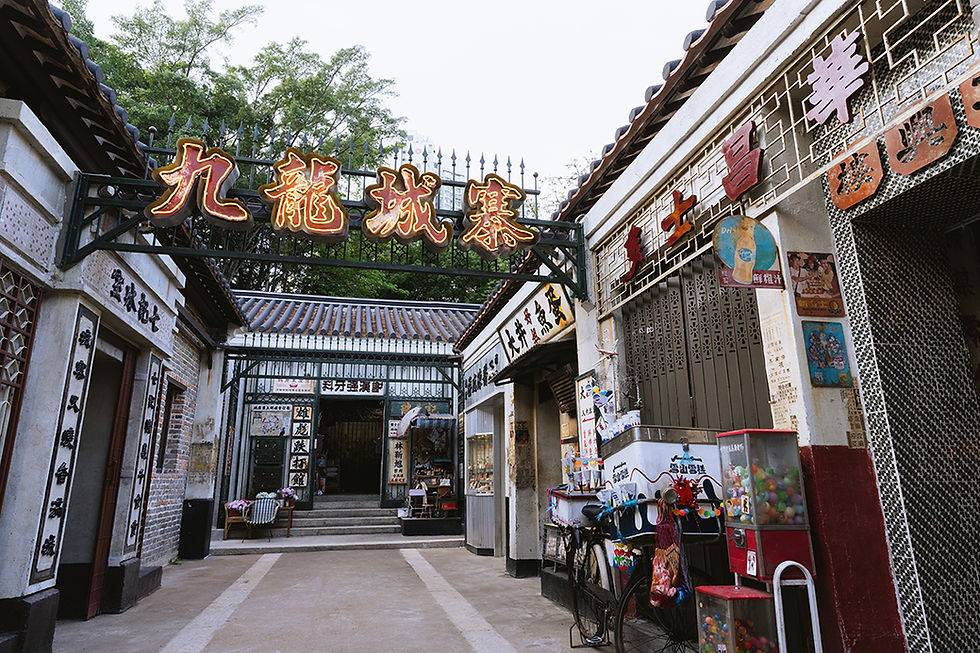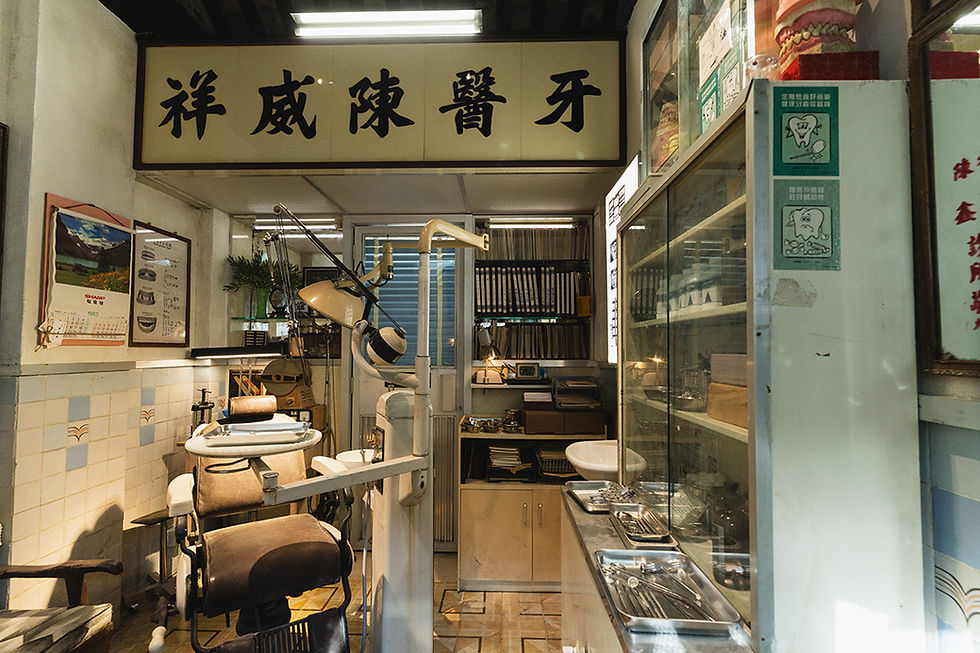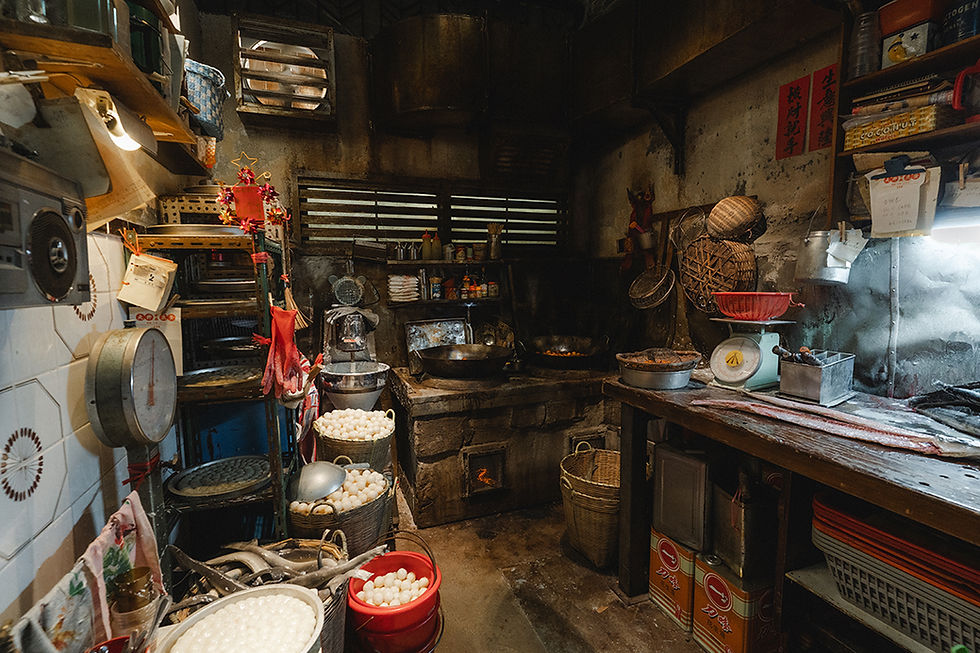Festivals and Events

Rooftop of Light and Shadow in the Walled City. Photography: Hong Kong Tourism Board.
The legendary spirit of ‘Kowloon Walled City’ returns
By Geoffrey Williams
Once the world’s most densely populated place, ‘Kowloon Walled City’ is back in the spotlight with a new exhibition bringing fresh attention to this vibrant corner of Hong Kong. Known for its fascinating history, its maze-like architecture and lawless atmosphere, Kowloon Walled City has long captured the imagination of filmmakers, historians and curious travellers alike.
The history of the Walled City can be traced back to the Song dynasty (960–1279), and by the late 1980s the Walled City contained roughly 35,000 residents within its 2.6 hectares (approximately four football fields), resulting in a staggering population density of over 3 million people per square mile. Now, its legendary spirit is being brought vividly back to life – on the very site it once stood – with ‘Kowloon Walled City: A Cinematic Journey’ Movie Set Exhibition.
The critically acclaimed 2024 blockbuster action film ‘Twilight of the Warriors: Walled In’ was directed by Macau-born Hong Kong filmmaker Soi Cheang, and stars Louis Koo, Sammo Hung, and Raymond Lam. The film was based on the novel ‘City of Darkness’ by Yuyi and the manhua (comic) of the same name by Andy Seto.
Theatrically released in Hong Kong and mainland China on 1 May 2024, by July, ‘Twilight of the Warriors: Walled In’ had become the highest grossing film in Hong Kong, also going on to top the mainland Chinese daily box office. The film won Best Film in the 43rd Hong Kong Film Awards – having been nominated for fourteen awards, making it the second most-nominated film of the year behind ‘The Last Dance’. The film enjoyed Official Selection (the prestigious Midnight Screening) at the 2024 Cannes Film Festival and was selected to be the closing night film at the 23rd New York Asian Film Festival in 2024.
Set in 1980s Hong Kong, the film tells the story of Chan Lok-kwan (Lam), a refugee from the mainland who is trying to survive by participating in underground fighting rings. Out of sheer desperation to survive, Lok-kwan steals drugs from a local crime syndicate boss, Mr Big (Hung), before fleeing to the Walled City. Here, he encounters Cyclone (Koo), the local crime lord who rules the notoriously dangerous and overpopulated area. In the Walled City, Lok-kwan learns about the order and chaos within the community and forms bonds with Cyclone and his gang – experiences that force him to reflect on what he wants from the future and what he will do to attain it.

Kowloon Walled City Arch. Photography: Hong Kong Tourism Board.
Launched in May 2025, this immersive experience marks Hong Kong’s largest-ever movie set exhibition, inspired by the ‘Twilight of the Warriors: Walled In’. More than just a set replica, the experience invites visitors into the gritty soul of 1980s Kowloon, immersing them in the texture, tension, and spirit of a city within a city. Over the next three years, visitors can step into scenes from the film through full-scale recreations of the Walled City’s gritty 1980s alleyways and storefronts, from a tailor shop and bone-setting clinic to a barber and fish ball factory.

The full-scale recreation of the Walled City’s dental clinic. Photography: Hong Kong Tourism Board.

The full-scale recreation of the Walled City’s fish ball factory. Photography: Hong Kong Tourism Board.
For solo travellers, Kowloon Walled City’s layered past and cinematic revival offer a powerful sense of place and perspective – a space where memory, imagination, and modern Hong Kong collide. To begin planning your Hong Kong adventure, start with the “Kowloon Walled City: A Cinematic Journey” Movie Set Exhibition, and then explore Hong Kong and Kowloon City's celebrated and timeless mix of history, culture, and cuisine.
The cultural treasures in Kowloon City
After exploring the exhibition, you can dive deeper into the neighbourhood’s vibrant arts and cultural scene.

Hau Wong Temple. Photography: Hong Kong Tourism Board.
Hau Wong Temple: Built in 1730 and dedicated to a loyal general of the Southern Song Dynasty, this historic temple is steeped in tradition. Keep an eye out for intricate dragon motifs, delicate porcelain figurines, and beautifully preserved Chinese calligraphy.
Cattle Depot Artist Village: As one of the city’s earliest artist enclaves, Cattle Depot was once an old slaughterhouse. But today, it’s home to local legends like Frog King and cutting-edge galleries such as Videotage and 1a Space – and it continues to fuel Hong Kong’s boundary-pushing art scene.
Archaeological discoveries at Sung Wong Toi MTR Station: Uncover relics from the Song and Yuan Dynasties at the Treasures from Sacred Hill exhibition inside Sung Wong Toi MTR Station. Featuring artifacts, maps and photos, the display reveals a lost world of maritime trade and everyday life.
Savour the flavours of Kowloon City
No trip to Kowloon City is complete without sampling the flavours that have shaped its identity for generations.

Lok Hau Fook. Photography: Hong Kong Tourism Board.
Lok Hau Fook Restaurant: Beloved for Chiu Chow specialties, Lok Hau Fook draws crowds with its roast goose, melon pancakes, chicken dumplings and crispy deep-fried taro. The restaurants retro interiors complete the nostalgic experience.
Lok Yuen: A local favourite, Lok Yuen is a no-frills cha chaan teng (Hong Kong-style café) specialising in melt-in-your-mouth satay beef French toast. Pair it with yuen yeung – a mix of coffee and Hong Kong-style Milk Tea – for Hong Kong comfort food at its best.
Fong Wing Kee Hot Pot Restaurant: A local institution since 1952, Fong Wing Kee is still a top pick for bubbling, fragrant hotpot dinners. Choose from mild or fiery broths and load up on thinly sliced meats, seafood, satay noodles and handmade dumplings.
Tai Wo Tang: Once a Chinese medicine shop, this 1932 tong lau (‘Chinese building’), was typical of 19th Century urban living in southern China and Southeast Asia. It has been beautifully restored, and while many of the charming original fixtures remain, the menu now offers modern coffee, tea and brunch plates that attract a younger crowd.
Tei Mou Koon Dessert: This longtime dessert shop dishes out classic Cantonese sweets like herbal jelly, black sesame soup and mango sago.
Geoffrey Williams is the Founder and Publishing Curator of The Solo Traveller.





